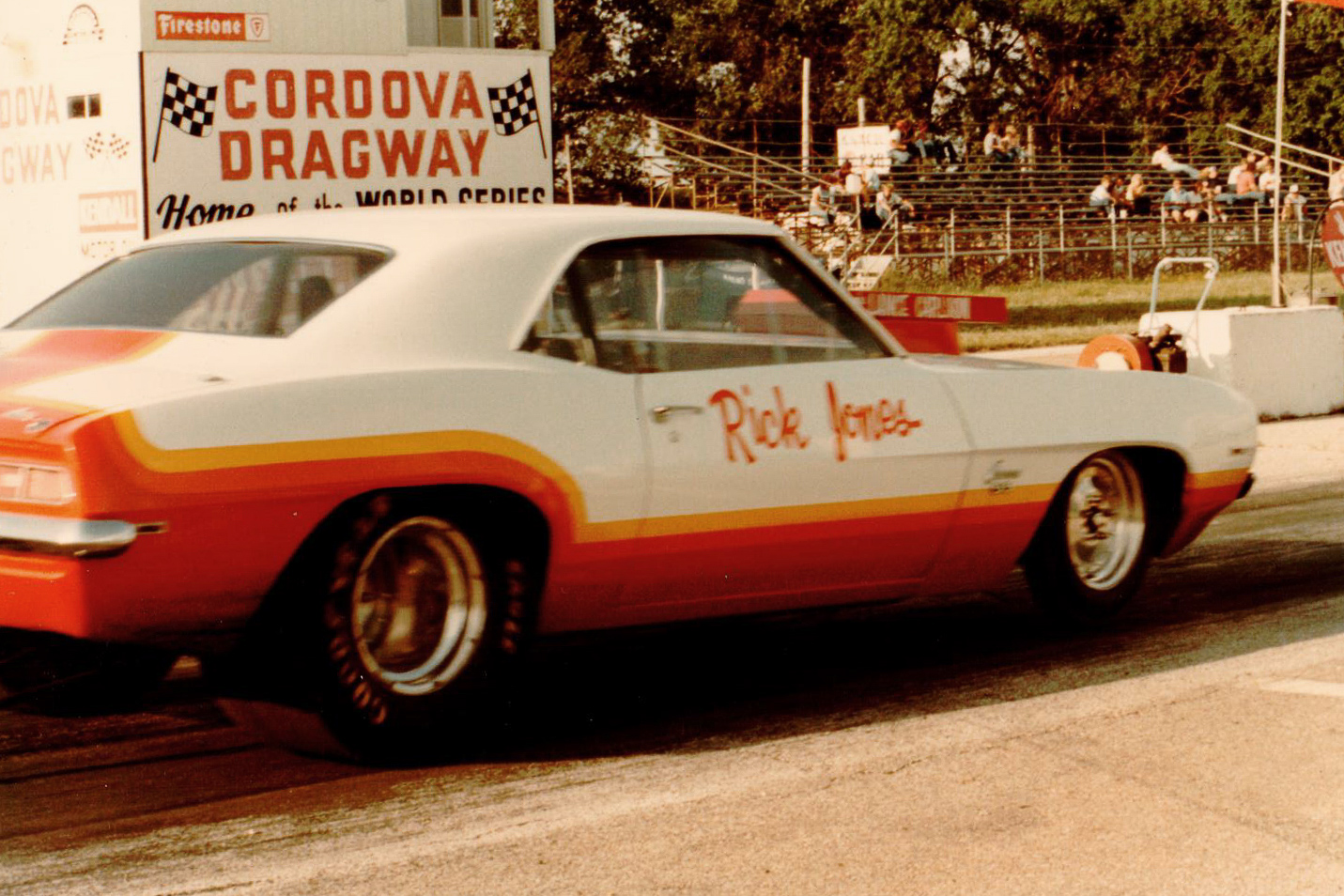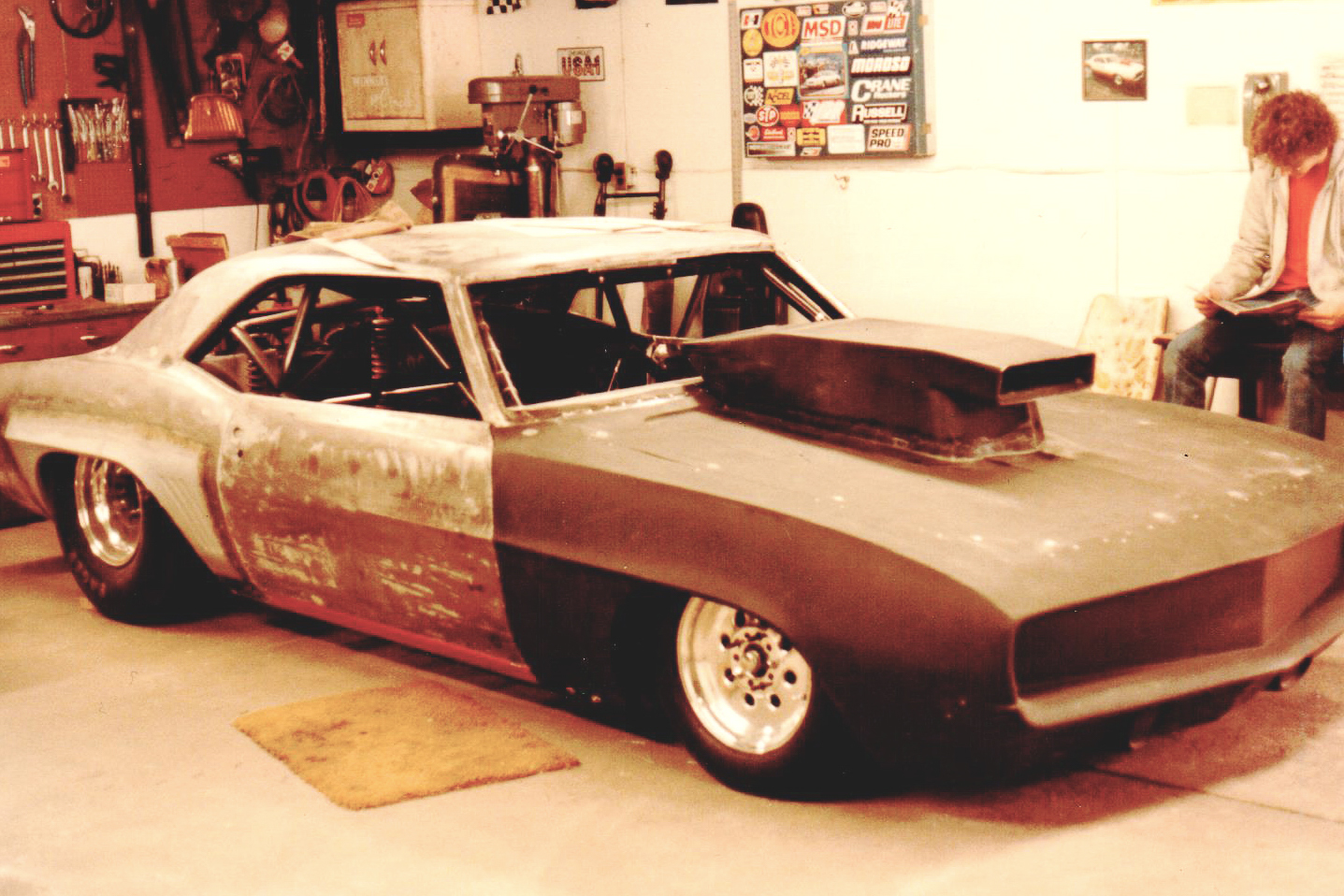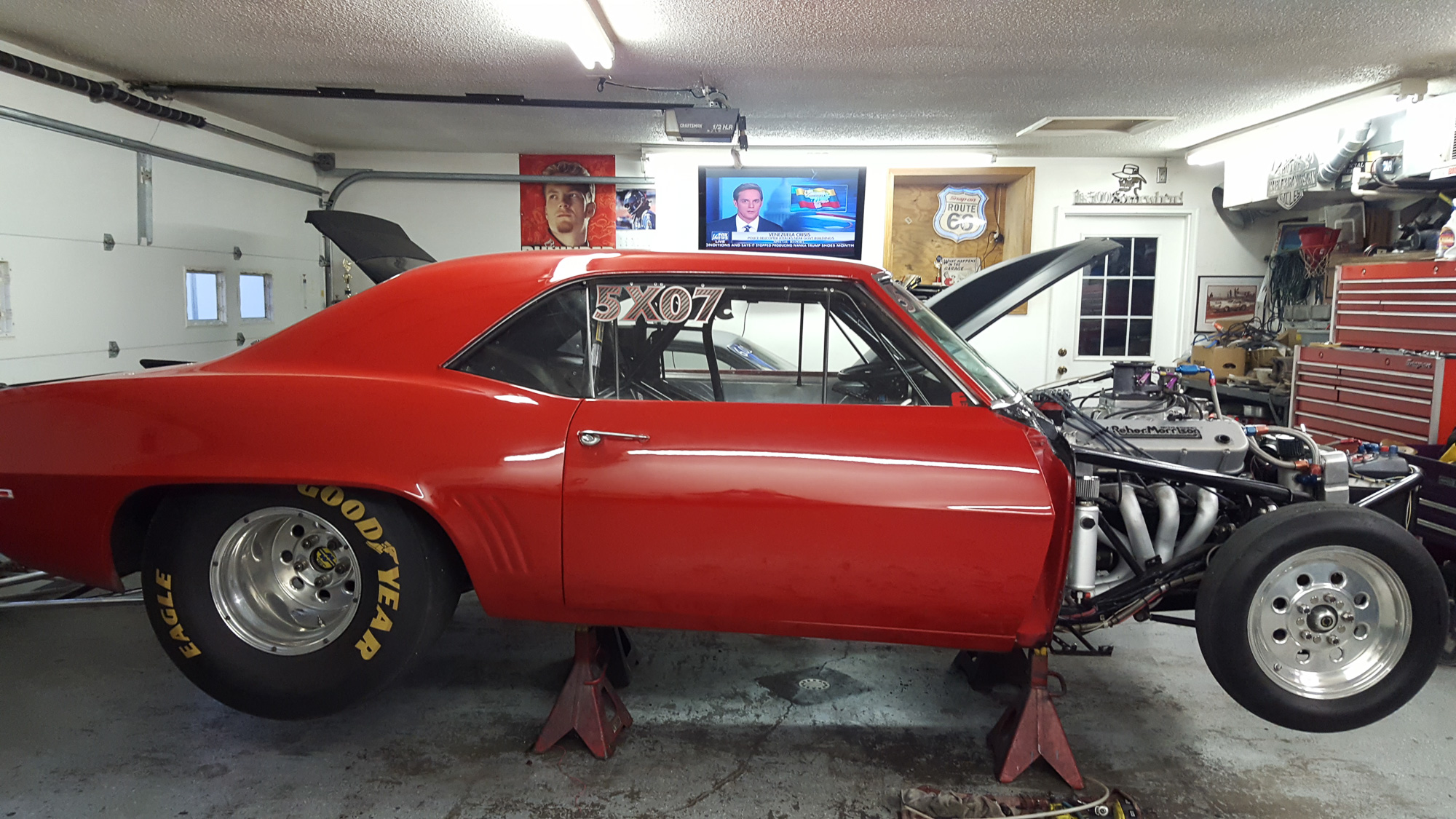Rick Jones Reunited With His First Race Car After 32 Years
They say you never truly forget your first love, and for veteran racer and renowned chassis builder Rick Jones, that classic line rings no more true.
In October of 1978, a young and bright-eyed Jones — a mere senior in high school at the time — purchased an all-original 1969 Chevrolet Camaro, complete with a 375-horse 396 with a four-speed “because I wanted to race,” he shares.

“It was a pretty nice car,” he continues. “I got my lessons on how to drive a four-speed and how to power-shift on a Muncie. That winter I took it apart and put a 9-inch Ford rearend in it, ladders bars and 12-inch tire and started racing at my local track in Cordova [Illinois] the next year. I enjoyed tearing it apart and making the next revision as much as I did racing … sometimes more.”
The Camaro went through a number of transformations under Jones with the help of his friends, progressing from leaf springs and slapper bars with an 8-point roll bar, to a narrowed 9-inch rearend with a two-by-three square tube backhalf to fit wider rear slicks — “we put some Cragar Super Tricks on it back in the day,” he adds with a laugh, in reference to the desirability of the wheels in days-gone-by. “I had a Muncie in there and then progressed to a Ford top-loader, and I’d break that thing all the time, and eventually went to a Doug Nash five-speed. I just kept working on it every year. We later took the front stub off and put a two-by-three all the way to the front, with a Corvair front suspension, because it had the same spindle as the first-generation Camaro, so the brakes and all would work.

“It still had the steel front fenders on it — I didn’t have the money to buy a fiberglass front end at the time,” he continues.
Interestingly, it was this Camaro — the one he spent his wilder days tinkering on and took his now-wife, Bonnie Jones, on dates in — that precipitated the founding of the Rick Jones Race Cars and Quarter-Max empire we know today.
“My first customer at the time was a local bracket racer from Iowa, Greg Couch — he was a really good racer and saw the work I did on my car and would ask if I wanted to work on his … I put a 9-inch Ford and four-link in it and some struts on it. That was the first car besides my own I was able to do work on, and I was doing all of this at home in my garage at the time.”


With a legitimate chassis shop at his disposal, Jones back-halved his Camaro, adding a new round-tube chassis with a four-link, coilover shocks, and the works, along with a fiberglass frontend and hood scoop up front and a fresh coat of paint. That was the last iteration it went through under his guidance … or so he thought.
In a tale very reminiscent of the famous story of Papa John’s Pizza founder John Schnatter, who sold his prized second-gen Camaro to help found his business, Jones — in an effort to raise capital to turn his chassis business into a full-time endeavor — decided to sell the Camaro. The date was October 20, 1986 — a date he’s kept written down.

Jones says that at the time, and in the many years that have followed in which he raised a son, built a fledgling business, and went racing at a far more professional level, he rarely second-guessed his decision to part with the car.
“I’m the kind of person that always feels it’s time to move forward, to go forward all the time. So I said I’d just build something else.” Jones was able to keep tabs on the car for a time — it was originally sold to fellow Cordova-area racer Randy Halley, who in 1987 and again in 1990 brought it to Jones for chassis work. Jones says he would “see it from time to time at a race, but never really even thought about it. One of my employees, Tony Quinn, he was on me for years that I should buy that thing back, but I was kinda’ over that phase of my life,” he says.
Last summer, Jones said he began kicking around the idea of having a racecar of his own again. He had competed for years in IHRA Pro Stock, in NHRA Pro Stock Truck, campaigned and tuned a Pro Modified and Pro Stock entry for son Rickie, and has served as crew chief for two-time Pro Stock champion Erica Enders since 2014. But he hadn’t been behind the wheel since 2006, and he had the itch.
“I just wanted to have something my family — Bonnie, Rickie, my daughter-in-law Sarah and granddaughter Ava —and I could just go and have some fun with. In July, a good friend of mine, Ralph Haga, called and asked me if my old Camaro had an X-brace in the back window. I thought that was an odd question, but I said, ‘well, yeah, why?’ And he said, ‘oh, nothing.’ A couple of days went by, and we were actually heading to the Goodguys show in Des Moines and Ralph told me we needed to go look at something. I said ‘well, why?’ and he told me he thought he’d found my old car. He knew I was thinking about building something, that I’d like to have an old car with a four-speed or something again.”

Once Holly sold the car, Jones lost track of its specific whereabouts, only aware that it had been floating around Iowa … but he was soon to be reunited with an old flame.
Haga and Jones paid a visit to an area racers’ shop — Jones asked Haga not to give away his identity, and he went sans any apparel that would tip off who he was. “I just wanted to walk in and look at the car,” he says. “Ralph had contacted the owner on his own, and so we walked in and right away the guy knew who I was. I though ‘aw man, I got my cover blown.’ ”

Rickie Jones trying out the seat of his father’s Camaro. The second-generation racer had not yet been born when Rick sold the Camaro in 1986.
“I got to looking at the car, and it’s hard to explain, but I walked up to it and it was almost like your old dog or horse that you haven’t seen in a long time and they know who you are. I know it sounds strange, but it was like it was talking to me,” he says, with emotion in his voice. “This was my car.”
Adding to the sentiment of the moment, Jones says the title to the car that he’d gotten in ’78 that he simply signed and handed over to Halley had endured through the three different owners without anyone turning it back in. Once Jones was able to strike a deal to buy the car back — it hadn’t been for sale, but Haga was able to convince the owner to part with it — he received the title that he says “still had my signature on it, with my parents address on it from when I bought it in 1978. That meant a lot to me to see that. It was cool.”



The Camaro before and after being stripped down to the bare shell for its revitalization.
Haga negotiated the deal, and more than thirty years after he parted with it, Jones’ Camaro — the one that could be easily credited for his success in business — was back home, where he never really knew it belonged until now.
Jones says it took a few weeks of hand-wringing to get the owner to sell the car, and says “when they brought it back and put the trailer door down, it was pretty cool to see.”
What initially began with humble intentions, gradually became another extensive chapter in the life of this Camaro.
“Rickie and I both want to drive the car, and we realized right away we don’t fit, and over the years it had had this and that modified, and it just wasn’t what I wanted. I wasn’t going to do hardly anything to it, but my guys and I just started looking at it. We started cutting different things off of it to make more room or change something, and all of a sudden, the whole chassis was on the floor,” Jones says with a laugh. “My shop foreman, JJ Coe, told me that if I would have kept the car that we would have kept updating it anyway so we should just go ahead and cut it apart and make it the latest and greatest.”

Jones finally said “to hell with it,” continuing, “I was away one day and JJ sent me a picture and said ‘here you go’ — the entire chassis cut clean out of the car and laying in a pile on the floor.
When shop time permits — often after-hours or on weekends — Jones and company put in work on the car, constructing a modern Pro Stock-style chassis under the original ’69 body, roof, and steel doors with all of the latest parts and pieces. Jones procured a 565-inch big-block and a Liberty five-speed with a McLeod clutch to power it. “I’m lucky that my guys in the shop really want to see this project through … they all have a hand in rebuilding this old girl,” Jones adds.
Jones intends to run with the Ozark Mountain Super Shifters series near his home in Illinois — a series he says “guys have a lot of fun … it’s a great organization with a good group of guys.”




Current progress as the RJ Race Cars staff fabricates a modern Pro Stock-style chassis under the first-gen Camaro.
Once he gets re-acclimated — he says driving is a lot like riding a bike — he’ll put a larger-cube engine from Elite Motorsports in between the fenders to ramp up the enjoyment level of his pride and joy. Even as it stands, he expects it to be a high seven-second runner.
The Joneses hope to wrap up the project later this summer or early autumn to get it on-track by season’s end. When that time comes we’ll have a complete overview of the car and all that went into it’s revitalization, so stay tuned.

Recent Posts
-
The Third Stage: Prepping the Chassis for Paint with Quarter-Max Racing
Get an exclusive look behind the scenes at Quarter-Max Racing! Join Clyde Scott as he walks you thr …Oct 6th 2025 -
Robin Roberts Captures Hometown Pro Mod Victory at MWDRS Smack Down
An exciting weekend at Flying H Drag Strip in Odessa, Missouri, gave the MWDRS first time winners, n …Sep 24th 2025 -
Mounting a One-Piece Front End: The Complete Quarter-Max How-To Guide
Mounting a one-piece front end on your race car? This DIY guide from Quarter-Max Racing is for you. …Sep 10th 2025




